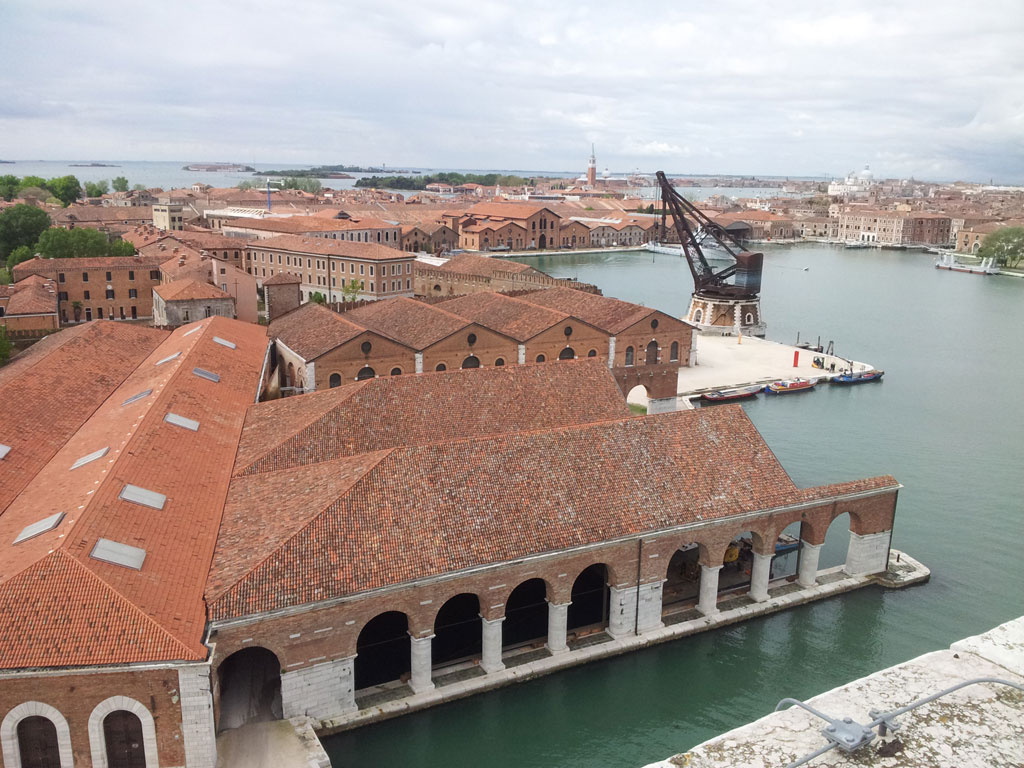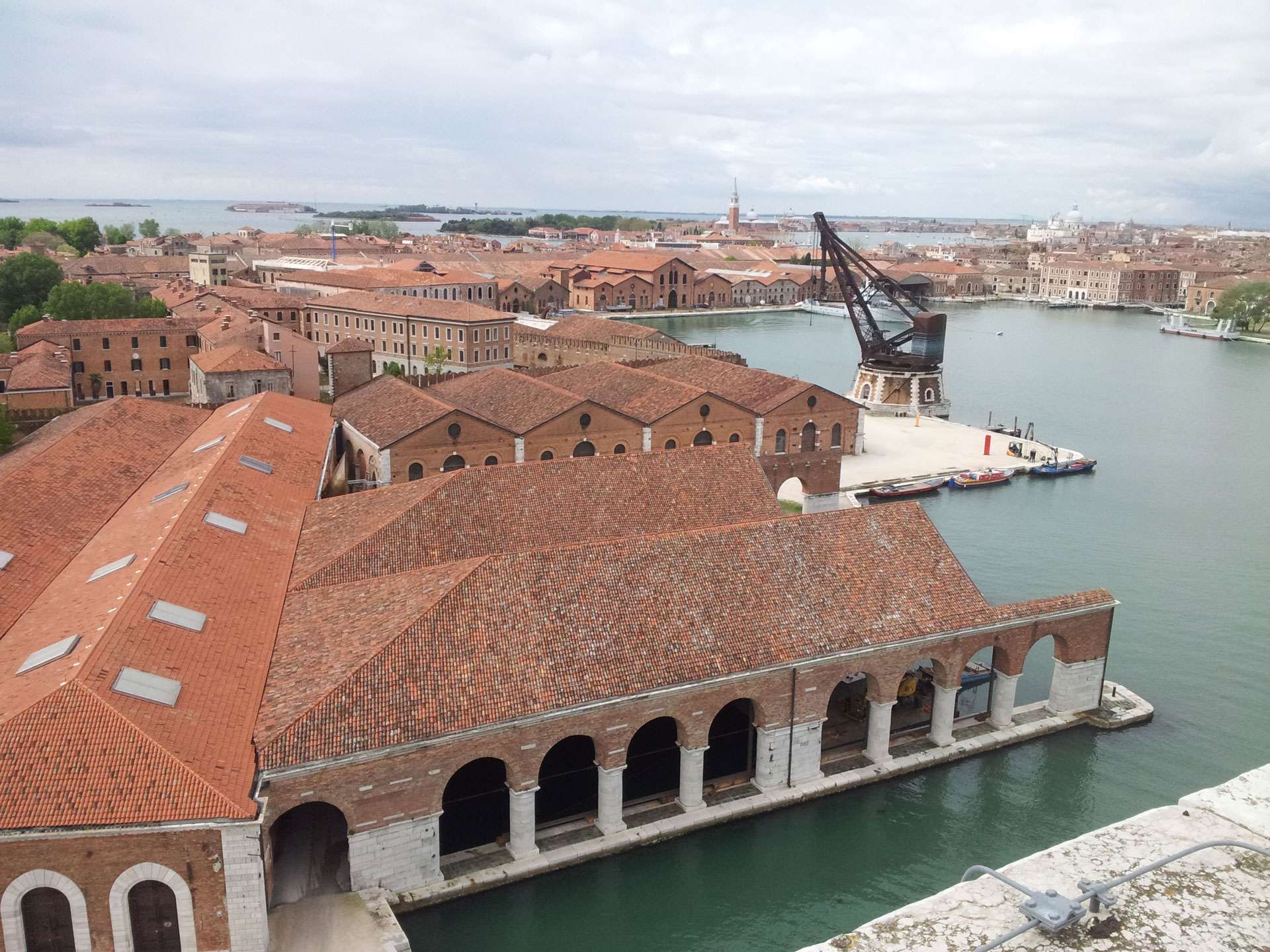This world-renowned event has helped consolidate Venice’s reputation as one of the leading cities for contemporary art and culture in Europe. The Venice Biennale runs from May to November each year and alternates between art and architecture exhibitions. Attracting half a million visitors, it hosts up to 90 countries in the historic Pavilions scattered across the city. It is considered one of the most prestigious cultural institutions and is responsible for the organisation of the annual Venice Film Festival and Contemporary Music Festival.
Celebrating groundbreaking artists and pioneering architecture, the Biennale reflects on topical issues in world politics, society and contemporary culture. Each year, the committee sets an overarching theme that contributing countries must respond to, establishing a relationship, however minute, between diverse curatorial visions.
The Venice Biennale is divided across multiple sites around the city. This guide offers advice on how best to maximise your time between the Arsenale, Giardini and outlying pavilions, as well as a brief history of the institution and our favourite time to visit.

The Arsenale: Photo by Giulio Squillacciotti (Courtesy La Biennale di Venezia)
125 years of art
Established in 1895, the Venice Biennale was the first of its kind and has been at the forefront of the international art world ever since. Initially housed in the Napoleonic gardens of the Giardini, Belgium was the first country to open a national pavilion in 1907, followed shortly after by Great Britain, Germany and Hungary in 1909.
In the 1930s new festivals in music, cinema and theatre were brought to life. The world’s first Film Festival was founded in Venice in 1932, which still draws famous film stars and directors to the city.
The Biennale has long been a world stage for landmark events, revealing Japanese and Indian cinema to the west for the first time and showcasing major works by the likes of Kusama, Modigliani and Klimt. In 1909 Marinetti dropped his manifesto from the campanile in the Piazza San Marco, giving rise to Italian Futurism.
Peggy Guggenheim displayed her modern art collection in 1948, marking the first appearance outside of the USA of a new generation of American painters, including Jackson Pollock and Mark Rothko. In under twenty years time Pop Art would arrive in Europe with Robert Rauchenberg, marking a shift in the contemporary art scene to America. And in 1993 Hans Haacke made history by smashing the floor of the German Pavilion, built by Hitler in 1938, to pieces.
The Biennale was expanded to the Arsenale in 1980 before spilling out across the rest of the city. The former naval shipyard of the Venetian Republic now hosts 23 national pavilions, including countries like Italy, China, South Africa and Mexico. 125 years after the first exhibition was held at the Giardini, the prestigious institution is still growing: Ghana, Madagascar, Malaysia and Pakistan participated for the first time in 2019.
The best time to visit the Venice Biennale
In late August, early September the most successful directors and actors descend upon the red carpet at Lido di Venezia for the Venice Film Festival, upholding the glamorous status of the city. If you can handle Venice when it’s busy and love cinema, many of the film screenings are open to the public, providing a great opportunity to combine two world-famous events.
The Festival for Contemporary Music runs later in September, early October, which is not only our favourite time to visit the biennale, it is also one of the best times to experience Venice as a whole. There tends to be a lull in the number of tourists between the height of summer and Christmas and the temperatures are cool and comfortable without being too cold. A month or so before the Biennale ends, the exhibition spaces are far less busy as well. Enjoy the art or architecture installations at the Giardini by day, followed by dinner at Al Covo and a concert at the Teatro Piccolo at the Arsenale come the evening. Music lovers can take advantage of the fixed subscription ticket which allows entry to five concerts.
Three days in Venice
To appreciate the two main venues at the Biennale, we recommend taking two days to explore each site. It is possible to do both in a day if you are organised, but don’t expect to see everything and be sure to arrive at the Arsenale promptly upon opening at 10 a.m. Bear in mind that both sites close at 6 p.m. and tickets are only valid for one entry.
That being said, your tickets don’t have to be used immediately — if you are staying in one of our luxury villas near Venice or Verona you could spread these trips out over a week or two. The great thing about the pavilions around the city as well is that these are almost always free to enter so you can make an appearance at any time.
Day 1 at the Venice Biennale: The Giardini
There is an overwhelming amount to see at the Biennale so it is always best to check the programme and read pavilion reviews before you visit to see what piques your interest most. If you only have one day in Venice, the Giardini is the smaller and more accessible of the two sites.
If you are visiting in September or October, wake early and venture into Saint Mark’s Square to watch the sunrise. It is our favourite time of day to experience this iconic cathedral when the Piazza is empty of people. Reserve a table for breakfast at one of the luxury hotels on the Grand Canal or stop for coffee on the Riva dei Setti Martiri before arriving at the Giardini for 10 a.m. Both venues have a main exhibition hall or central pavilion, which is the best place to start. Venture over the bridge to the Padiglione Venezia before making your way around the national pavilions scattered around the park.
The geometric cafe designed by Tobias Rehberger is a good place to stop for a quick bite if you have limited time, alternatively, try one of the bacari along the Via Giuseppe Garibaldi. For something more memorable, take the vaporetto to the Accademia and enjoy a late lunch at the Enoteca Ai Artisti.
If you have time, end the day exploring the contemporary art collection divided between the Palazzo Grassi and Punta Della Dogana.

The Giardini: Photo by Francesco Galli (Courtesy La Biennale di Venezia)
Day 2 at the Venice Biennale: The Arsenale
Start your visit in the central pavilion, housed in the Arsenale’s Corderie before exploring the installations of South Africa, Peru, Argentina and the UAE in the Sale D’Armi. The site here is vast and this approach will save you continually having to walk back on yourself. There is also a good cafe once you reach the far end, which is ideal for a light lunch after spending all morning on your feet.
Castello is the largest and furthermost district in Venice so it’s a good idea to prioritise any pavilions in this area if you have time after visiting the Arsenale. Many of the pop-up spaces and collateral events change location each year. For example, in 2019 the Lithuanian Pavilion was held in the nearby Marina Militare, which still belongs to the Arsenal's military zone. A beach was curated inside where holidaymakers sang opera-style performances throughout the day.
There is no better way to wind down in the evening than with an Aperol Spritz on the Riva degli Schiavoni whilst the sun sets over the Giudecca and lagoon beyond.

The Arsenale: Photo by Andrea Avezzù (Courtesy La Biennale di Venezia)
Day 3 at the Venice Biennale: The pavilions around Venice
Each year the biennale hosts a number of collateral events which take place throughout the city in the many museums, palazzi and commercial galleries. Teamed with the many national pavilions held across Venice, there is an overwhelming variety of exhibitions to visit. Start in Santa Croce and Cannaregio before taking the vaporetto across to Dorsoduro and finishing with dinner in San Polo.
Since there is so much happening in the city, don’t be surprised if you stumble across events and exhibitions you haven’t heard of before. These sometimes are the best places for a quick detour, especially if they are anything like the Icelandic Pavilion on the Giudecca in 2019. The impressive multisensory installation, “Chromo Sapiens”, formed a labyrinth from brightly coloured, fuzzy, synthetic hair.
Recurring venues that are used as exhibition spaces as part of the biennale include the Palazzo Mora and Ca D’Oro in Cannaregio and the Palazzo Cavalli-Franchetti overlooking the Ponte dell'Accademia. If you have time, visit the Fondazione Prada’s contemporary exhibition space at the Ca’ Corner della Regina, which also houses the Biennale’s historical archive.
Due to the ongoing Covid-19 pandemic, the next Art Biennale has been suspended until 2022. The 59th International Art Exhibition will take place from 23rd April to the 27th November and is curated by Cecilia Alemani, the first Italian woman to ever hold the position. In a year that has seen great social and political upheaval, it may be one of the most important biennale’s of our time, so why not plan your trip now.
